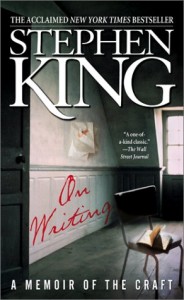There’s no shortcut to slow-cooking ribs, and writing is the same.
Revision takes time, but that “fall-off-the-bone” end result is worth it.
Every story needs a test audience. The key to making the most of reader feedback is: Don’t be in a hurry.
PHASE 1: PREPARE
First, exhaust your own ability to critique and revise. Polish that piece as much as possible.
Readers can’t focus on problems that eluded you if they are struggling to understand the plot or distracted by grammar and mechanics.
Draft. Revise. Let Sit. Revise. Let Sit. Proofread. Proofread. Proofread . . . and THEN seek feedback. You won’t get valuable insights until you weed out issues you can catch yourself.
PHASE 2: LISTEN
When you first receive feedback, be completely open. Listen. Don’t speak.
Your story must speak for itself, so don’t waste energy explaining it. When you’re defensive, you’re not listening to what worked or didn’t work. Even odd suggestions still indicate points of disconnect that you need to know about.
Once your reader(s) are done sharing their thoughts, feel free to ask questions and seek clarification. When getting verbal feedback, take notes about everything you’re hearing.
PHASE 3: ABSORB
Your reaction to feedback may be defensive, celebratory, or in between. But just like when
you get into an argument, a day goes by and you realize, “Hey, he/she had a point!” Time turns anger into insight. Pride into caution.
You should neither accept nor reject criticism right after you receive it. Unless the changes are purely typographical and cosmetic, put revisions on hold for at least twenty-four hours. If you have the luxury, wait a week, or longer.
Give your brain time to concoct new ideas that spawn from reader insights.
PHASE 4: REVISE
Many changes are no-brainers. If something confused the reader and there’s a fix that doesn’t alter your beloved story or characters: by all means fix it!
Other changes will be murkier, and at times overwhelming. Hopefully, you’ve chosen your test audience for a reason. You trust their impressions, but you know their tastes well enough to account for personal preferences that need not define your story.
Don’t over-complicate your decision-making process. Know your story, know your audience, and let that knowledge drive the advice you accept or reject.
If a majority of your readers had a problem, something’s gotta change! You don’t have to use any one suggestion, but you have to find the common denominator issue and fix it. For example, if almost everyone found it unrealistic that Grandma suddenly knew martial arts in the climax, you don’t have to give Granny a gun like one reader suggested, but at least start dropping clues that she’s a black belt in Act One.
If a minority, or even just one reader, had a very specific problem: You STILL have to carefully consider that impression. Just know that you cannot please everyone. If you step back and think about the problem your test reader had, you can usually tell when it’s a matter of personal taste.
In some cases, your test reader just wanted to read a different story. Or your character reminded them of someone they hate. Smile, nod, and thank that reader for the idea, but you don’t have to change your story over one sour impression.
However, if that one random gripe persistently gnaws at your brain stem, guess what? Maybe you agree with that person.
I’ve frequently made worthwhile changes based on one lone insight. In particular, listen to readers who have a better perspective than you on your story’s character or situation. When writing about an ice fisherman, I trusted the knowledge of an outdoorsman. When writing about thirteen-year-old Violet Black, I trusted female readers, having never been a thirteen-year-old girl myself.
The opposite is true too. Don’t let a “civilian” inform you about something that you are an expert on. Some people are “know-it-alls.” If your test reader thought Doctor So-and-So “wasn’t being very realistic” when he neglected to wash his hands, but as an OR Nurse, you’ve seen worse, then trust your own experience and authority.
What about when half your readers love something and half hate it. Stephen King has great advice on split feedback from his book On Writing:
“In baseball, tie goes to the runner; for novelists, it goes to the writer.”
You make the call! If you like the story as written, awesome! If you’re worried about the
haters, though, you can compromise. Don’t throw away a character, plot point, or image that half your readers loved, but do modify, add, or enhance those elements based on the criticism.
For my novel Jake Carter & the Nightmare Gallery, I had a handful of readers who didn’t understand my villain’s motivations. I also had a majority of readers who loved the insidious Dr. Shade and found him to be a psychologically complex brand of evil.
While I personally felt I had a great villain, the criticism still prompted me to rewrite a few chapters. In the end, I was happier that I brought out more of what made my bad guy tick. The readers who didn’t like the character would still probably be underwhelmed, but the readers I had already won over were only going to like it more.
PHASE 5: CROSSROADS
You’ve received, absorbed, and applied feedback. Now what? Chances are, you’ll feel one of three ways:
- Satisfied: You’re confident enough to put finishing touches on this story, shop it around, or do whatever you do with stories labeled “Done!”
- Uncertain: You’ve made great changes, but your gut says something’s still not right. Get some more feedback! Back to phase 1!
- Vexed: Your story isn’t ready to be published. But nor is it necessarily ready for more feedback because you haven’t fixed everything you know is wrong. Sometimes the best thing to do is put a draft like this in suspension. Let it sit in a drawer (or hard drive) for a few months while you develop other projects.
You never know when you’ll eventually stumble upon the solution for that dormant project!
Connect with Kevin M. Folliard on . . .
Facebook: https://www.facebook.com/kevinfolliard
Twitter: https://twitter.com/Kmfollia



